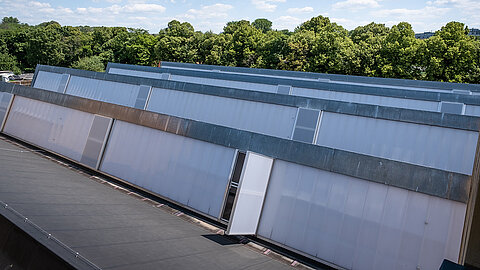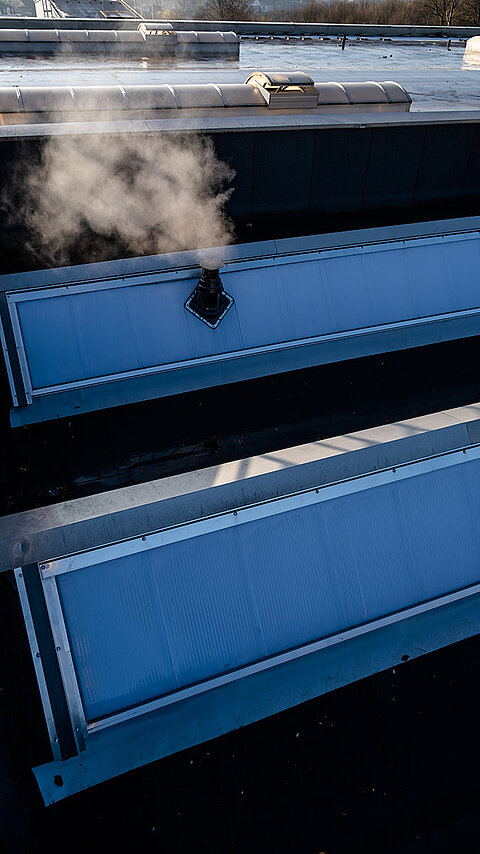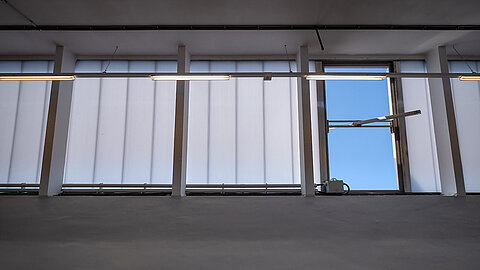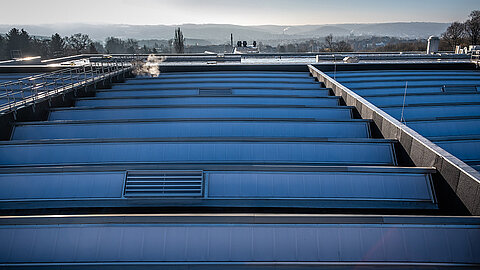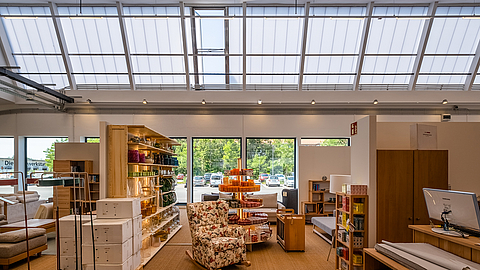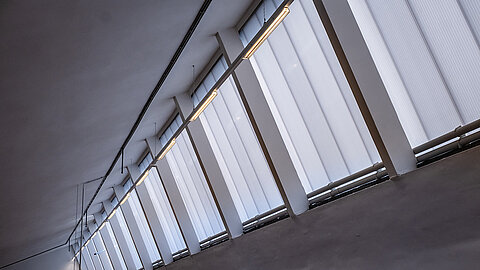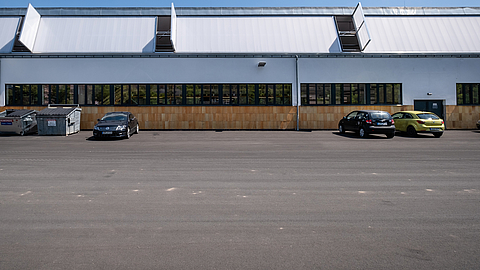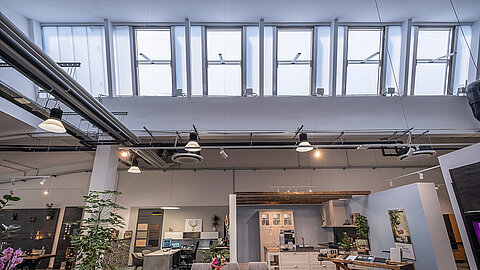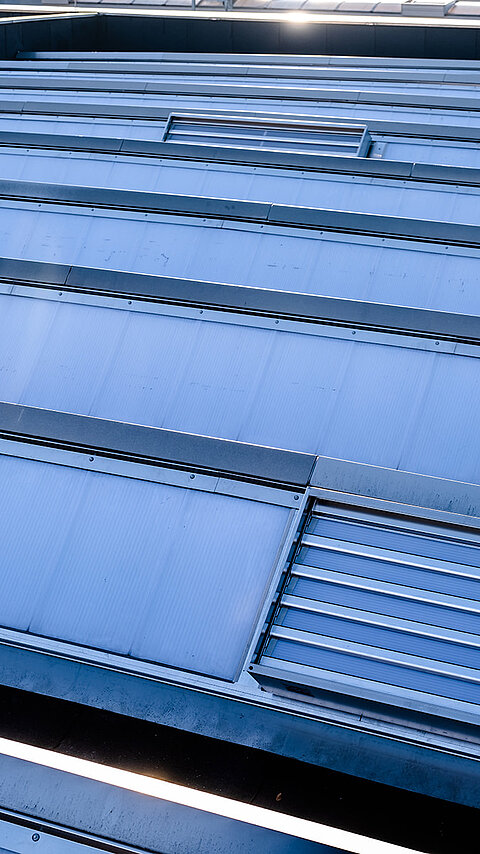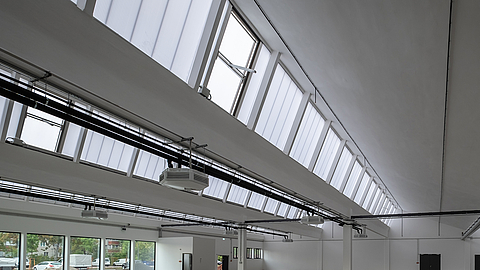Tongue and groove systems
Translucent façade cladding for optimum daylight illumination in your building
Daylight has enormous positive effects on people and therefore plays an important role in buildings – especially when people live or work in them. Natural light not only provides sufficient illumination, it also has positive effects on the people who are in the building. Moreover, illumination with natural light increases people's productivity and saves energy, as it can replace artificial light to a large extent.
That is why architects and planners rely on the advantages of translucent PC multi-wall panels. Light-transmitting façade systems and roof lighting elements made of PC multi-wall panels transform buildings into rooms flooded with light. Tongue and groove systems allow glazing with PC multi-wall panels without visible glazing bars and thus ensure optimum daylight penetration into the building.
Translucent lighting elements made of polycarbonate are mainly installed in large sports, industrial, production and leisure halls. This is because they enable a large part of the building illumination to be implemented via daylight. But TONGUE AND GROOVE SYSTEMS not only meet the need for natural lighting.
With U-values of up to 0.71 W/m2K, they guarantee an excellent energy balance. A further significant leap towards a higher insulation value and thus an increased ecological benefit is achieved by filling the panels with the silicate Lumira® aerogel, which brings the light elements to a thermal insulation value of up to 0.59 W/m²K. In addition, tongue and groove systems have high sound insulation values of up to 22 dB.
As the 500 mm wide and up to 6 metre long elements are connected with a tongue and groove system, glazing without visible glazing bars is possible. A variety of profiles and end elements make these skylight systems an all-round functional and attractive concept.
Areas of use
The areas of use for TONGUE AND GROOVE SYSTEMS are versatile and range from façade cladding to use in skylights. TONGUE AND GROOVE SYSTEMS not only bring optimum daylight into your building when constructing a new building, TONGUE AND GROOVE SYSTEMS are also ideal for the subsequent replacement of wired glass on shed buildings.
- Façades and curtain walls
- Shed roofs
- Roof lanterns
- Skylights
- Window glazing
- Roofing
The polycarbonate panels have fire class B-s1,d0 according to EN 13501.
Advantages of the product
Why TONGUE AND GROOVE SYSTEMS?
- High light transmission of the translucent thermoplastic (up to 58% for 40 mm panels)
- Excellent energy balance due to U-values up to 0.71 W/m2K with standard glazing or 0.59 W/m2K with Lumira® filling
- High sound insulation values up to 22 dB
- Glazing without glazing bars
- High weather resistance due to impact strength of the material and special UV protection
- Strain relief for the statics due to low material weight
- Customised design options due to diverse colour shades of the panels
- Temperature resistance from -40 °C to +115 °C
- 10-year guarantee against yellowing, ageing and hail impact
- Delivery of coated end elements (optional)
Technical details of the product
TONGUE AND GROOVE SYSTEMS
Designs
TONGUE AND GROOVE SYSTEMS from roda are composed as follows: the polycarbonate multi-wall panels are mounted in aluminium frame profiles. These are specially manufactured as end profiles, corner profiles and base profiles and are also available thermally separated in addition to the non-thermally separated frame profile variant. For example, translucent TONGUE AND GROOVE SYSTEMS made of polycarbonate enable glazing without glazing bars. Different glazing variants allow you to individually adapt the glazing to your building and your requirements. Window and door elements can also be integrated via H-profiles. Additional suction anchors absorb the wind loads depending on the installation height and length of the panels. This ensures that your façade cladding is well prepared for all influences.
Glazing types
Glazing type A: Translucent polycarbonate lighting elements 40 mm thick
![[Translate to English:] Nut Feder Systeme von roda -2540-4MC](/fileadmin/user_upload/Downloads/Tageslichttechnik/Zubehoer/Nut-Feder-Systeme/2540-4-mc.jpg)
PC 2540-4 MC
- Design: crystal / opal / colour
- Up value: 1.3 – 1.6 W/m2K
- Weight: approx. 4.0 kg/m2
- Construction width: 500 mm (-2/ +6 mm)
![[Translate to English:] Nut Feder Systeme von roda 2540-6](/fileadmin/_processed_/6/f/csm_2540-6_97e9f4d716.jpg)
PC, 2540-6
- Design: crystal / opal / colour
- Up value: 1.1 – 1.2 W/m2K
- Weight: approx. 4.2 kg/m2
- Construction width: 500 mm (-2/ +6 mm)
Glazing type B: Translucent polycarbonate lighting elements 50 mm thick
Colour options
The roda TONGUE AND GROOVE SYSTEMS made of polycarbonate are not only available in different glazing types, but also in different colour designs. Further information on the exact minimum quantities, colour combinations and various design options is available on request.
Frame profile types
The frame profiles of the roda TONGUE AND GROOVE SYSTEMS are quick and easy to assemble and are therefore suitable for the implementation of a wide range of constructions. They are available in thermally separated or non-thermally separated versions for the different panel thicknesses. The extruded profiles are made of aluminium according to DIN EN 755-2 and coated in the desired colour. The seals are made of grey thermoplastic elastomers (TPE) as standard.
Type 1: thermally separated
- Available for all panel thicknesses (panel thickness 60 mm, only available thermally separated)
- Aluminium profiles according to DIN EN 755-2
- Insulating bars made of glass-fibre reinforced polyamide
- With internal and external seal in one or two parts depending on the design
Fastening via flat suction anchor
The roda TONGUE AND GROOVE SYSTEMS are attached via the flat suction anchors. The flat suction anchors are fixed to the substructure and, after two panels have been plugged together, hold them in place via their internal suction anchor grooves. The advantage of this is that they allow continuous glazing without glazing bars, which makes the façade look like a single unit. The suction anchors are cut from extruded aluminium.
References
Tongue and groove systems
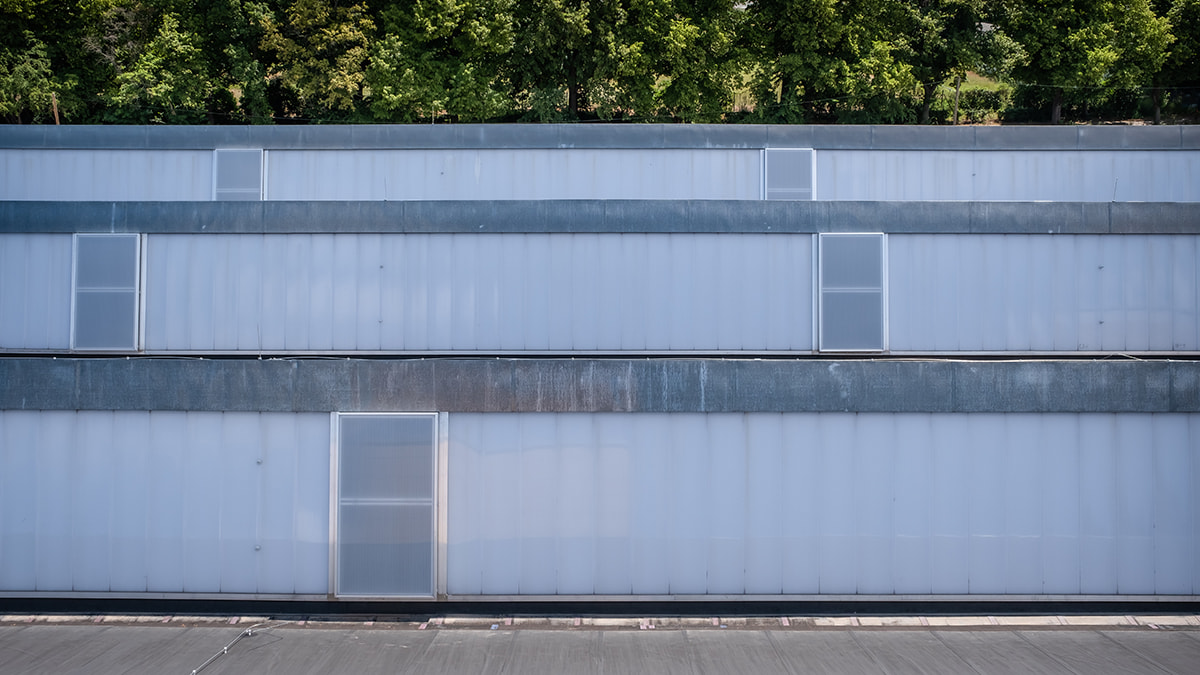
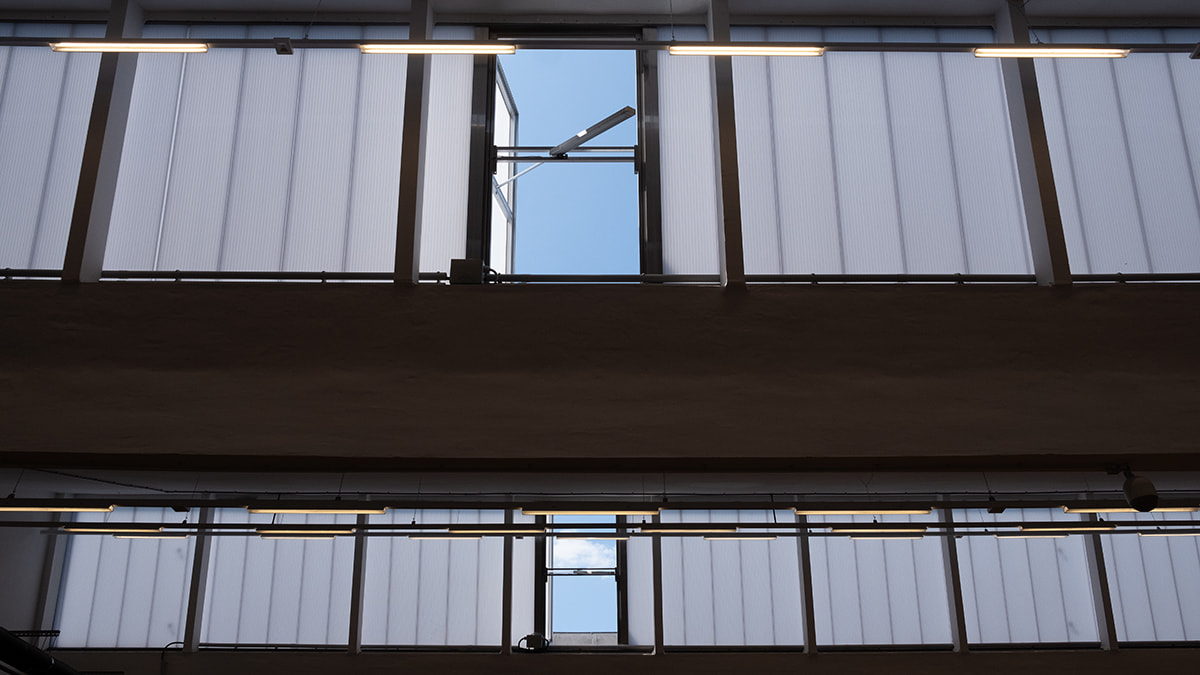
![[Translate to English:] Nut Feder Systeme von roda - 2540-4](/fileadmin/user_upload/Downloads/Tageslichttechnik/Zubehoer/Nut-Feder-Systeme/2540-4.jpg)
![[Translate to English:] Nut Feder Systeme von roda - 2540-7](/fileadmin/user_upload/Downloads/Tageslichttechnik/Zubehoer/Nut-Feder-Systeme/2540-7.jpg)
![[Translate to English:] PC 2540-4 2550-10](/fileadmin/user_upload/Downloads/Tageslichttechnik/Zubehoer/Nut-Feder-Systeme/2550-10.jpg)
![[Translate to English:] PC 2540-4 2560-12](/fileadmin/user_upload/Downloads/Tageslichttechnik/Zubehoer/Nut-Feder-Systeme/2560-12.jpg)
![[Translate to English:] Color: vollflächige Einfärbung des Paneels](/fileadmin/_processed_/d/7/csm_pc-vollflaechig-farbig_ae4b0977a0.jpg)
![[Translate to English:] Bicolor: Einfärbung der Innenseite](/fileadmin/_processed_/2/5/csm_pc-einfaerbung-innenseite_a302765cf3.jpg)
![[Translate to English:] DecoColor: Einfärbung der Außenseite](/fileadmin/_processed_/6/e/csm_pc-einfaerbung-aussenseite_07854d91c7.jpg)
![[Translate to English:] DuoColor: Einfärbung bis zur Paneelmitte](/fileadmin/_processed_/2/5/csm_pc-einfaerbung-paneelmitte_6767094a0a.jpg)
![[Translate to English:] Rahmenprofil Nut-Feder-System](/fileadmin/user_upload/Downloads/Tageslichttechnik/Zubehoer/Nut-Feder-Systeme/h-sprossen.jpg)
![[Translate to English:] Rahmenprofil Nut-Feder-System](/fileadmin/user_upload/Downloads/Tageslichttechnik/Zubehoer/Nut-Feder-Systeme/rahmenprofil.jpg)
![[Translate to English:] FLACHSOGANKER](/fileadmin/user_upload/Downloads/Tageslichttechnik/Zubehoer/Nut-Feder-Systeme/2550-10-mit-soganker-49405060-e1560347113136.jpg)
